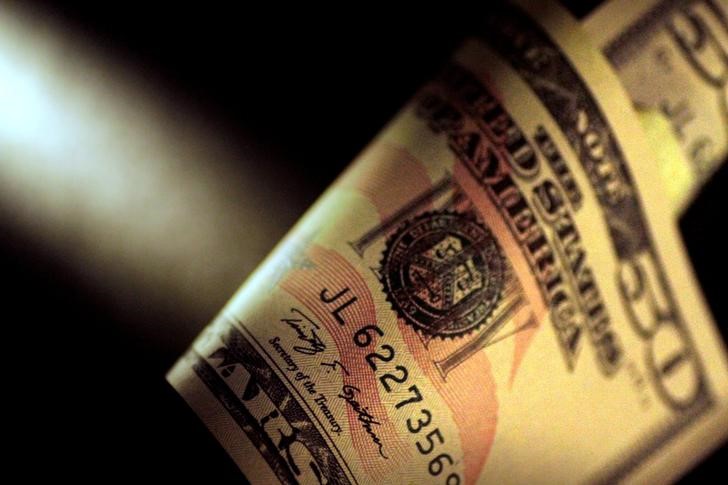By Peter Nurse
Investing.com – The U.S. dollar rose strongly in early European trade Monday as surging oil prices raised inflation concerns, which could prompt the U.S. Federal Reserve to lift interest rates at its next meeting.
At 03:00 ET (07:00 GMT), the , which tracks the greenback against a basket of six other currencies, traded 0.4% higher at 102.560, after earlier breaking past 103 for the first time in a week.
The index had dropped 1.8% in March, pressured by concerns that turmoil in the banking sector would hit economic activity, prompting the to pause its monetary tightening cycle earlier than previously expected.
This view was given a degree of credence after data on Friday showed U.S. rose only moderately in February after surging the prior month, with showing some signs of cooling.
However, the surprise decision of the Organization of Petroleum Exporting Countries and allies, known as OPEC+, on Sunday to cut production once more by just over 1 million barrels per day has sent oil prices soaring, changing the narrative.
“Since inflation is likely to remain the biggest driver of the Fed’s monetary policy, the market will be less likely to assume an early shift to lower rates or a faster pace of rate cuts,” said Hidehiro Joke, a strategist at Mizuho Securities.
traded 0.2% lower at 1.0812, after earlier touching a one-week low of 1.0788 as the dollar surged, while fell 0.2% to 1.2306.
Economic data due for release later in the session include manufacturing PMI numbers for both the and the . These are expected to show that this important sector remained in contraction in March.
rose 0.6% to 133.62 after Japan’s rose to 49.2 in March from February’s 47.7, marking the slowest contraction since November 2022.
However, the yen was weighed by the rise in U.S. bond yields in the wake of the OPEC+ decision, with the two-year U.S. Treasury yield, which typically moves in step with interest rate expectations, up 4.8 basis points at 4.110%.
rose 0.3% to 6.8884 after data showed growth in China’s manufacturing sector slowed in March, with the coming in at 50, retreating from an eight-month high of 51.6 hit in February.
This tallies with last week’s government data that showed that growth in China’s manufacturing sector was slowing after an initial post-COVID bounce.
Read the full article here



